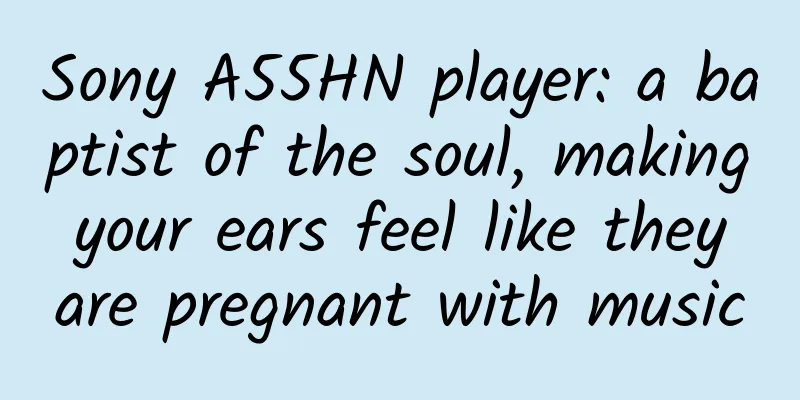Passenger plane crashed due to bird strike, experts explain: Could it have been avoided?

|
On the 25th local time, an Azerbaijan Airlines passenger plane flying from Baku, Azerbaijan to Grozny, Russia crashed in western Kazakhstan. The Kazakhstan Ministry of Emergency Situations confirmed that the plane crashed while making an emergency landing in Aktau due to bad weather at the destination, and a fire broke out at the crash site. According to reports from multiple media outlets, the cause of the crash of the passenger plane near Aktau, Kazakhstan, was that the plane hit a flock of birds. On December 20, Tibet Airlines flight TV9873 encountered a bird strike during takeoff, and the crew immediately decided to return. The plane landed safely and no one was injured. Can bird strikes cause passenger plane crashes? More than 20,000 bird strikes occur worldwide every year! How dangerous are bird strikes? A bird strike refers to an incident in which an aircraft is hit head-on by a bird while flying at low altitude or approaching landing, causing damage to objects and casualties among birds. The International Aeronautical Federation classifies bird strikes as Class A aviation disasters . According to statistics from the International Civil Aviation Organization, there are more than 20,000 bird strikes every year around the world. The cost of bird strikes around the world is more than $10 billion each year. Bird strikes have become one of the most dangerous factors threatening aviation safety . Why can a bird's "egg hitting a rock" threaten an airplane? Aircraft are made of metal, while birds are just flesh and blood. Birds hitting airplanes is like an egg hitting a rock. So why can they still cause devastating damage to airplanes? Here we need to use some knowledge of physics. Birds are not very heavy and their speed is not fast, but airplanes are just the opposite. Their relative speed is the key to causing huge impact force. For example, a sparrow weighing 100 grams collides with an airplane traveling at 400 kilometers per hour, which can instantly generate a two-ton impact force, which can damage the airplane at the least, or even destroy the airplane and kill people . Experts say that airplane cockpit windows, sensors, and engine blades are all more likely to be damaged by bird strikes. Expert interpretation: Can bird strikes be avoided? So which parts of an aircraft are most likely to be hit by birds? Why do birds not avoid them in advance but hit them when they encounter an aircraft? How should birds be prevented from hitting aircraft? Let's listen to the expert's interpretation. Wang Yanan, editor-in-chief of "Aviation Knowledge" of the Chinese Society of Aeronautics and Astronautics, said that during the flight of an aircraft, the parts most likely to be hit by birds are usually the front of the nose and the leading edge of the wing, including the power system, that is, the engine. These areas are at the forefront of flight and are therefore most susceptible to bird strikes. Among these parts, if the power system is hit, it often has more serious consequences. In particular, when an engine is hit by a large bird, it may cause damage to the fan blades, compressor or turbine blades, thereby reducing or completely losing the engine thrust. In extreme cases, other engine components of the aircraft may also be damaged, and even more serious consequences such as fire may occur. Therefore, bird strike prevention of engines has always been an important topic in the aviation industry. Wang Yanan pointed out that for aircraft, it is not that birds will not be avoided, but that it is difficult for birds to be effectively avoided due to the characteristics of high-speed flight of aircraft . When taking off, the plane travels at extremely high speeds, possibly reaching hundreds of kilometers per hour. Such speeds and climb rates often make it impossible for flocks of birds to avoid them in time. **** Wang Yanan said that in order to prevent bird strikes, humans have developed many technologies. For example, airports are equipped with comprehensive bird-repelling equipment to ensure that birds are difficult to gather in low-altitude airspace and prevent birds from gathering in airports and their surrounding environments . These bird-repelling methods include using sound, light and even biological methods, such as releasing birds of prey at airports and using the natural enemies of ordinary birds to disperse large flocks of birds . However, despite these measures, bird strike prevention still cannot completely eliminate the risk. Because bird flocks are mobile organisms, they sometimes move in the air. Even if there are no bird flocks at low altitudes at the airport, aircraft may still encounter bird flocks at other altitudes during takeoff and landing, thereby increasing the risk of collision. Therefore, each airport is equipped with bird repellents who specialize in bird repelling. Driving a bird repellent car, carrying bird repellent guns, gas cannons, voice bird repellent devices, bird nets and other eighteen "weapons", and "fighting wits and courage" with flying birds, this is the airport bird repellent. They will use a variety of means such as sounds, lights, and smells that birds are afraid of to drive birds away from the airport and ensure navigation safety. In recent years, many domestic airports, including Beijing Daxing Airport, have been trying to domesticate local falcons to drive away birds over the airport. In addition to biological bird repellent, various new bird repellent methods, including drone bird repellent, are also being tested in various places to minimize the probability of bird collisions, so that we can feel more and more at ease and assured when riding on civil airliners. Anti-bird strike design is the fundamental solution As the ecological environment gradually recovers over the years, the number and species of birds are increasing, and the smart birds are becoming more and more familiar with various bird-repelling methods and are no longer "afraid". Another method is to "anti-bird strike design" for aircraft to ensure flight safety. Song Chunyan, deputy chief designer of the Dynamic Strength Office of the Strength Design Research Department of the Shanghai Aircraft Design and Research Institute of Commercial Aircraft Corporation of China, said: "Compared with the temporary solution of bird driving, 'anti-bird strike design' is the fundamental solution to the problem of bird strikes on air routes." The goal of an aircraft's "bird strike resistance design" can be summed up in one sentence: "The aircraft can continue to fly and land safely after being hit by a bird." It is reported that my country's C919 bird strike test team spent a full eight years studying bird strikes in order to achieve the 25 milliseconds for each birdshot. Bird strike test is an essential part of testing the aircraft's ability to resist bird strikes. Generally speaking, there are two purposes for bird strike test: one is to test the aircraft's ability to resist bird strikes at the parts that are vulnerable to bird strikes; the other is to measure the strain, displacement, impact force and other data during the impact process to provide data support for designers' "anti-bird strike" design analysis. The bird strike test is conducted in the same way both at home and abroad, and both use air cannon technology. Before the test, the "bird bullet" is placed in the barrel, and the high-pressure gas is used to accelerate the bird bullet along the barrel to a predetermined speed, and then hits the test piece on the test bench. Wu Zhibin, deputy director of the Dynamic Strength Office of the Strength Design Research Department of the Shanghai Aircraft Design and Research Institute of Commercial Aircraft Corporation of China, said: "In the bird-strike resistance design of the C919, the designers have conducted research and optimization on the parts of the aircraft body that may be hit during flight. The bird-strike resistance design ideas of the nose and the leading edge of the tail are the two highlights of the C919 bird-strike resistance design. "The C919 nose also uses a load-bearing windshield, and the windshield can also participate in the load transfer of the nose, which greatly increases the bird-strike resistance of the nose. |
<<: Research finds that people who often eat "technology and hard work" tend to be emo
>>: It’s getting cold, mantis, it’s time to take medicine…
Recommend
Take you to play with Douyin's local traffic pool
Course Description The opportunities for Douyin i...
The wild vegetable season is here again. Poetry and ancient prose will help you appreciate the history of wild vegetable consumption
Spring is the season for all things to grow, and ...
The brand extension crisis of Microsoft, Xiaomi and LeTV
[[141229]] Microsoft, the world's largest sof...
One, two, three, four, five, six…Why is the honeycomb hexagonal?
The explanation we hear most often is that bees a...
Drinking whole milk can make you fat? It turns out you've been doing it wrong all along! Here's how to drink milk the right way
Myth: "Drinking whole milk makes you fat and...
Xianyu no-source e-commerce screen domination + instant store operation operation course collection (operation video + materials)
Xianyu no-source e-commerce screen domination + i...
Attention! Heavy rain + thunderstorm + hail is coming!
Today (June 14), heavy rainfall continues in the ...
Helio X25 is not powerful enough? Is Meizu PRO 6 considered a high-end flagship?
Many people say that because of the Meizu Blue No...
How did dinosaurs grow bird wings? A new species dating back 150 million years was discovered in Fujian
Produced by: Science Popularization China Author:...
Zhulu Video Account 1.1 Operator Practical Operation Course New Platform New Opportunities, Build a Private Domain Traffic Position!
Zhulu Video Account 1.1 Operator Practical Operat...
Marketing hot spots calendar for January 2022!
We have prepared a marketing hotspot calendar for...
Douyin SEO ranking rules and operation procedures
In the first half of this year, ByteDance CEO Zha...
Urgent reminder! Don’t wear these colors when going out
Audit expert: Jiang Tao Vice Chairman of the Scie...
If there is no growth, why don’t you try Zhihu? Zhihu Follower Increase Secrets
Traffic is something that all major companies are...
When ancient history meets cutting-edge technology: Helping to decipher Greek inscriptions and achieving a dance between AI and humanity?
*Inscriptions and steles are the embodiment of th...









